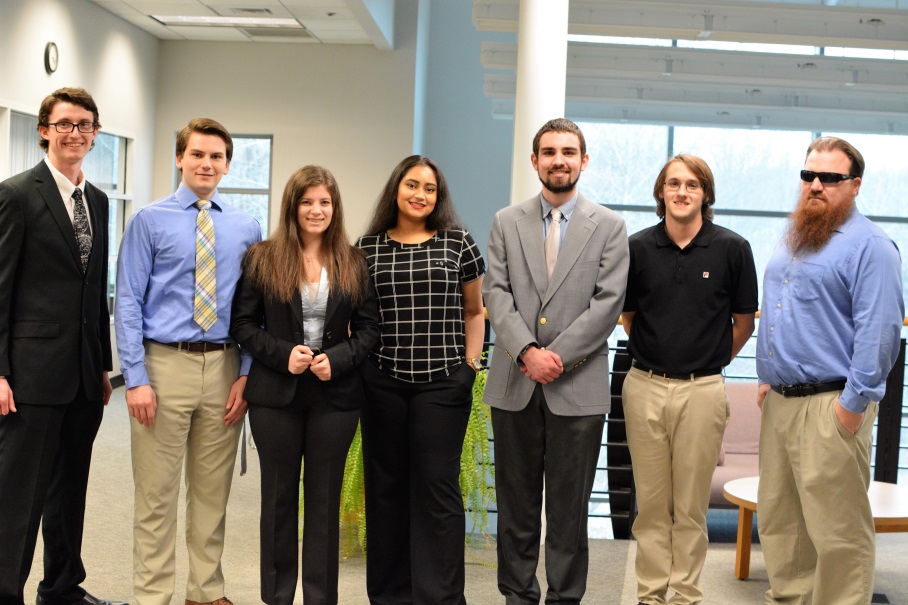Project Aether: Capitol students design payload, prepare experiments for Norway launch
March 6, 2018It will be another first for students at Capitol Technology University: a newly-formed, cross-disciplinary team of young astronautical engineers, computer scientists, and business students is participating in the RockSat program at the international level.
Their mission, dubbed Project Aether, has been selected for RockSat-X Norway. The students intend to observe the effects of the Aurora Borealis on the atmosphere while testing the performance of a new insulation system and comparing data rates from two different sources.
 “We have three science objectives that we aim to complete,” said Sophia LoSchiavo, who is co-leading the team together with Marissa Jagarnath. “We’ll be analyzing the composition of the atmosphere, since there’s a chance the rocket will fly through the Northern Lights. We’ll be comparing the data we receive to known data gathered from other flights. Our second goal is to compare the functionality of a hybrid insulation method, which we will modify, to standard multi-layer insulation.”
“We have three science objectives that we aim to complete,” said Sophia LoSchiavo, who is co-leading the team together with Marissa Jagarnath. “We’ll be analyzing the composition of the atmosphere, since there’s a chance the rocket will fly through the Northern Lights. We’ll be comparing the data we receive to known data gathered from other flights. Our second goal is to compare the functionality of a hybrid insulation method, which we will modify, to standard multi-layer insulation.”
“Our third goal is to compare data rates from the Iridium satellite constellation to those of the rocket itself,” she said.
In addition to LoSchiavo and Jagarnath, the Project Aether team includes Sam Lawson, Christopher Murray, Erik Schroen, Pierce Smith, and Dean Zinetti.
Capitol is one of a small group of schools around the United States, including Penn State and the University of New Hampshire, that will be participating in the Norway program together with international counterparts. The Capitol team is collaborating with students from nearby University of Maryland Baltimore County, and the Maryland Space Grant Consortium has provided funds needed to secure a berth on the sounding rocket.
Currently the team is building a prototype for the payload, using 3-D printers and other equipment housed at the university’s Fusion Lab.
“We’re essentially building it from scratch,” LoSchiavo said. “We’ve done all the planning ourselves and designed the payload. We’ve submitted the design to NASA and now we’re in the testing and review process.” In early March, the project is due for its next design review by the space agency, with a focus on subsystems.
The mission marks the first time Capitol students have been involved with an international RockSat program, although successive student teams have participated in Rocksat-X and RockOn! in the United States. Each member of Project Aether has participated in at least one of these programs, thus bringing prior experience to the current mission.
Professor Angela Walters, who chairs the astronautical engineering program, says projects like these reflect the university’s emphasis on practical experience.
“The students need to pass their design reviews to move to the next phase, just as would be the case with a NASA mission,” she said. “That’s great practical experience that students can use in their careers after they graduate.”
“Our goal in general is to provide students with experience doing real space systems engineering,” Walters said. “Plus, it’s just plain cool to build something, have it placed on a rocket, and see it fly into space. Lots of people dream about that kind of experience. Capitol students get to do it.”
Interested in supporting Project Aether through mentorship or financial donations? Contact the team at ctuprojectaether (at) gmail.com.


